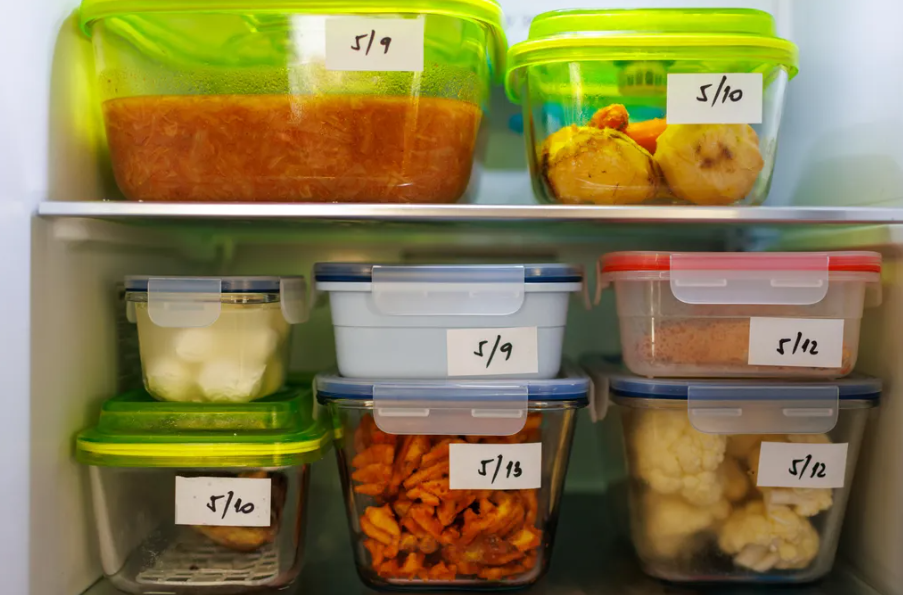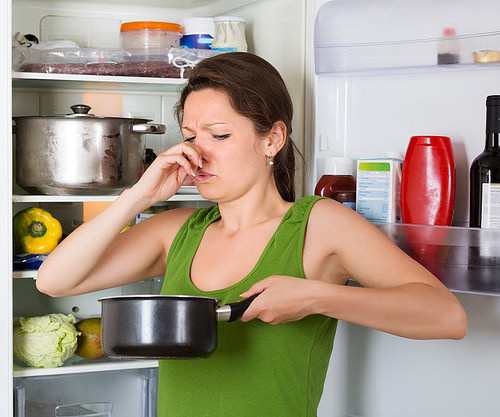While labeling on food provides a wealth of knowledge, it can be hard to decipher what exactly all that information means. Is this food still safe to eat? Has it expired? Today we are going to take a deep dive into what these dates and phrases mean in order to cut back on food waste and maintain food safety.
What’s the Difference Between Use By, Best By and Expiry Dates?
“Use By”
This term can be seen more like a rule, and advises people to use the product by this date. After this date the freshness, flavor, texture, and even appearance will decline. Products with a “use by” date usually have a long shelf life, so going past that date could take months or even years!
Foods that usually contain a “use by” date include:
- Condiments
- Canned Goods
- Dry Goods
“Sell By”
This refers to the date the store must sell the food by. These items will have many days, if not weeks, left before they spoil. Unless you want to eat the food right away, it is suggested to not buy foods with sell by dates on or past the day you purchase. Some stores will mark down prices as the sell by date gets closer, this is a great spot to look at for a great deal on items you’ll use right away!
Sell by dates are often found on:
- Fresh Foods
- Prepared Foods
- Foods that are Ready to Eat (salads, sandwiches, etc.)
“Best By”
This date represents when the food is at its peak in freshness, taste, and presentation. After this date, the quality of the product declines but it does not necessarily mean the food becomes unsafe to eat. For example, crackers are safe to eat well beyond their best buy date, however, they will likely no longer be crisp and flakey.
“Expiration”
This date is an absolute, meaning if this date has passed you should toss out the food. There is a very high chance that eating food past its expiration date can cause illness.
Other Terms
Some food items may include a “pack date” shown as a date or code. This is the day the food was packaged. “Guaranteed Fresh” can be found on in-store baked goods like breads, cakes, donuts, etc. These are the most-used terms to describe food expirations, but you may see some others in smaller stores.

How Do You Know If Your Food Is Safe To Eat?
There are some signs to look for to determine if food is safe to eat or not. For these signs we’re taking it all the way back to 1st grade (maybe even as early as preschool!) and talking about using our senses.
- Sight – the appearance of the food can tell us a lot about the safety of it. Most commonly, you can see mold growing on parts of the food. The food may start turning a different color, such as the browning of fruits or vegetables. While it may be tempting to cut off visible mold from a product, like a block of cheese or a slice of bread, the entire food package should be thrown away. Mold may still be growing on other parts of the food even if it’s not visible.
- Touch – as they go bad, foods will change in texture. Some may go from soft to hard, such as bread, while others may go from hard to soft, like fruits. Bacteria may also cause slime in the packaging or on the food item.
- Smell – a bad odor can be one of the first signs of food spoilage. As food decomposes, different gasses are released. If a food smells “bad” or “off” from its usual scent, then it is a good sign that it’s past its safe usage. If you’ve lost your sense of smell, try using your other senses or asking a household member for help.
- Taste – some foods may smell, look, and even feel like new but have a foul taste when you take a bite. If you take a bite of food and things aren’t tasting right, it is best to toss it out.
Foodborne illness is a major concern when it comes to spoiled food. Using your senses to determine the safety of food can help you avoid encountering these illnesses.
How to Store Your Food Products to Get the Most Out of Them
Proper storage of products can ensure you get the longest life out of them. Check the packaging for storage instructions. Many products state “refrigerate after opening”. Not refrigerating products that require it is a major cause of foodborne illness. Things like leftovers and cooked foods will also need to be refrigerated.
There are a few “rules of thumb” regarding food safety, dates, and storage:
- Canned goods can be stored for two to five years (canned vegetables, meats, soups, fruits).
- High-acid foods can be stored for up to 18 months due to the acidity fighting off bacteria (pickles, tomatoes, most juices).
- Milk is usually good five to seven days past the best by date. A quick smell can help you determine if it has spoiled.
- Bread can be stored in the refrigerator or even the freezer to greatly extend its shelf life.
- Store grains in an airtight container in the pantry or cabinet (a dry and dark space).
- Refrigerate or freeze perishables right when you get them home from the store. If you’re not going to use it in the next few days, go ahead and freeze it.
- Many products have storage directions and tips on the packaging; take a look!
- Do not re-freeze food that has already been thawed.
- Store raw food below cooked food in the refrigerator.
- Toss out canned food that has rust, especially heavily rusted cans.
- Small dents in cans are OK but avoid large dents (look for sharp corners in the dents, these could be causing a hole!).
- If a food requires refrigeration but is left out at room temperature for longer than two hours, then you should throw it out. Temperatures between 40* and 140* F (known as the temperature danger zone) are where bacteria grow best. Room temperature falls between these numbers. Products like cooked foods, deli meats and cheese, cut fruits, and cut vegetables need to be either hotter than 140* F (oven, stove, etc.) or colder than 40* F (refrigerator or freezer) within 2 hours of being in this temperature zone.
- When in doubt, THROW IT OUT! If you can’t determine whether a food is spoiled or not, but it is past its expiry date, it is best to go ahead and toss that food. Saving a few dollars is NOT worth getting sick over it.

How Can I Help Reduce Food Spoilage and Food Waste?
Food expiry dates add to the food waste created in our communities. They also lead households to spend more on food as you toss spoiled food out. So how can you reduce your food waste and food costs? Here are some ideas:
- Only buy the food you need. Pre-plan meal and snack ideas based on what’s already in your fridge, freezer and cupboards, and create your grocery list from these ideas.
- Stick to your list. Making a list is one thing, but sticking to it is another. Avoid impulse buys such as end-caps and sales when you have no use for them. If these items are ones you use regularly and do not spoil quickly, it is okay to buy a little extra!
- Freeze, can, or dry the extras. There are many ways to preserve extra food you may have. The key is to do it safely. Do some research on these preservation methods to ensure you keep the food safe.
The Bottom Line
Is this food safe to eat? Has this food expired? Hopefully after today’s blog post you’re able to answer these questions for yourself! If you are struggling with meal planning and grocery planning, talk with your dietitian to help trouble-shoot the challenges and to get new ideas. Don’t have a dietitian? No worries, our One Bite team is here and ready to help! Head on over to our contact page and let’s chat. And don’t forget: when in doubt, THROW IT OUT!







